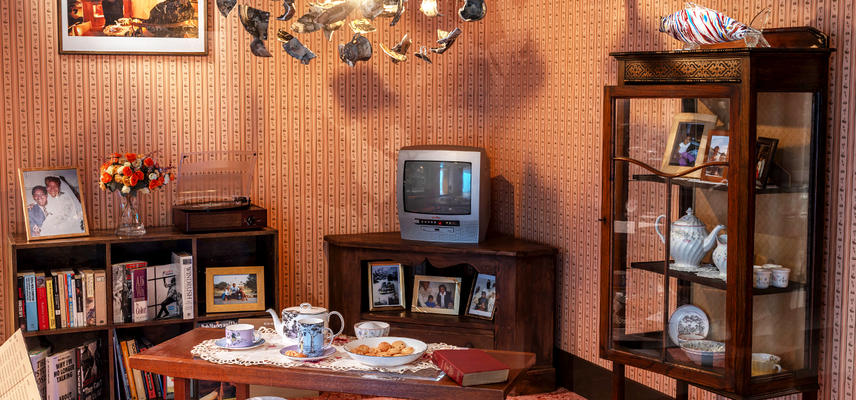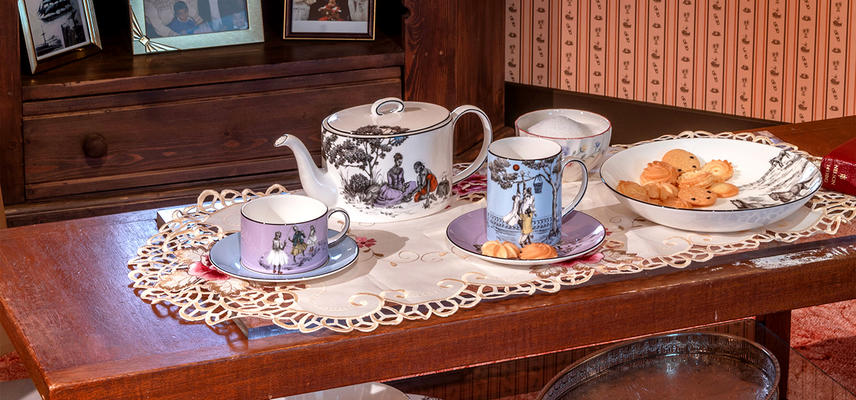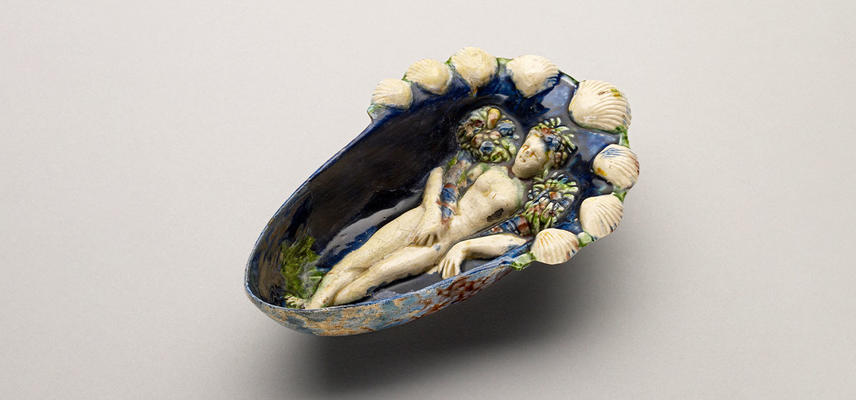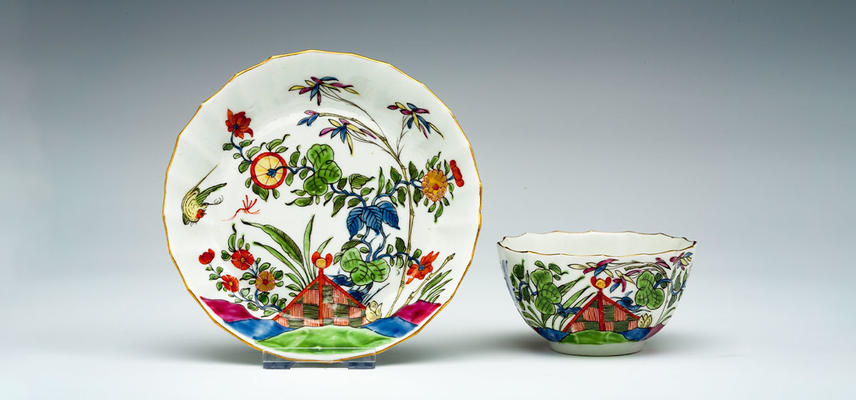EUROPEAN CERAMICS GALLERY
Ceramics provide a fascinating crossover between objects of art and items for practical use. The ceramics on display in this gallery cover 500 years of production ranging from the distinctive 17th-century Staffordshire slipware by Thomas Toft to the Japanese-inspired stoneware of 20th-century ceramicist Bernard Leach.
However it is European porcelain which dominates this gallery, not least because of the Marshall Collection, displayed in the central cases, one of the most comprehensive collections of early-coloured Worcester porcelain anywhere in the world. It was presented to the Ashmolean by Mr and Mrs Henry Marshall in memory of their son who was killed in action in the Second World War, on the condition that the collection (which numbers more than 1,000 pieces) always be displayed in its entirety.
Chinese porcelain had been highly admired in Europe since the Middle Ages but it was not until 1709 that the German alchemist Johann Friedrich Böttger cracked the code for producing porcelain.
Factories opened all over Europe in order to satisfy the public demand for this fine china. At the same time European eating and drinking habits were changing with the introduction of coffee and tea which brought a whole new aspect to the design of china.
A new addition to the gallery is the Shedding Light installation, which recreates a 1950s-60s Caribbean living room. This display was created in collaboration with a group of young producers from Oxford's Caribbean community, and reveals the deep entanglements between ceramics and global histories of trade, exploitation and resistance. The installation is accompanied by a timeline which shows a selection of historical dates that shaped the lives of enslaved people producing sugar in the Caribbean and the Caribbean diaspora.
GALLERY HIGHLIGHTS
Massive Vauxhall vase and cover of baluster form (detail)
Shedding Light installation
Tea set on Shedding Light's table
Palissy ware dish
Tea bowl and saucer
Staffordshire toft dish (detail)
Teapot and lid
Boar's head tureen
Jug with grotesque decoration
About Shedding light, a new display in this gallery in 2025
A team of Oxford‑based creatives collaborated with designers, artists, consultants and Museum staff to create the new Shedding light installation in this gallery. The scene pulls from a 1950s-60s Caribbean Living Room, reimagined with a contemporary twist.
The European Ceramics Gallery seemed a fitting space, with its large collection of dainty objects once used in sugar-sweetened rituals, to showcase the Caribbean living room. The new display reveals the deep entanglements between ceramics and global histories of trade, exploitation, and resistance. Each item has been carefully chosen to represent traditional contents found in this type of room, and to reflect the intertwined histories of British colonialism, enslavement, sugar production, and ceramics.
A timeline accompanies the installation with reference points chosen to shed light on the Atlantic journeys and the moments of violence, resistance and political and social change that provide context for our installation.
The display includes artwork from the previous A Nice Cup of Tea? installation which was shown in the gallery from 2019-2021.














